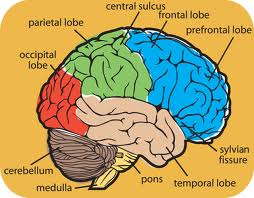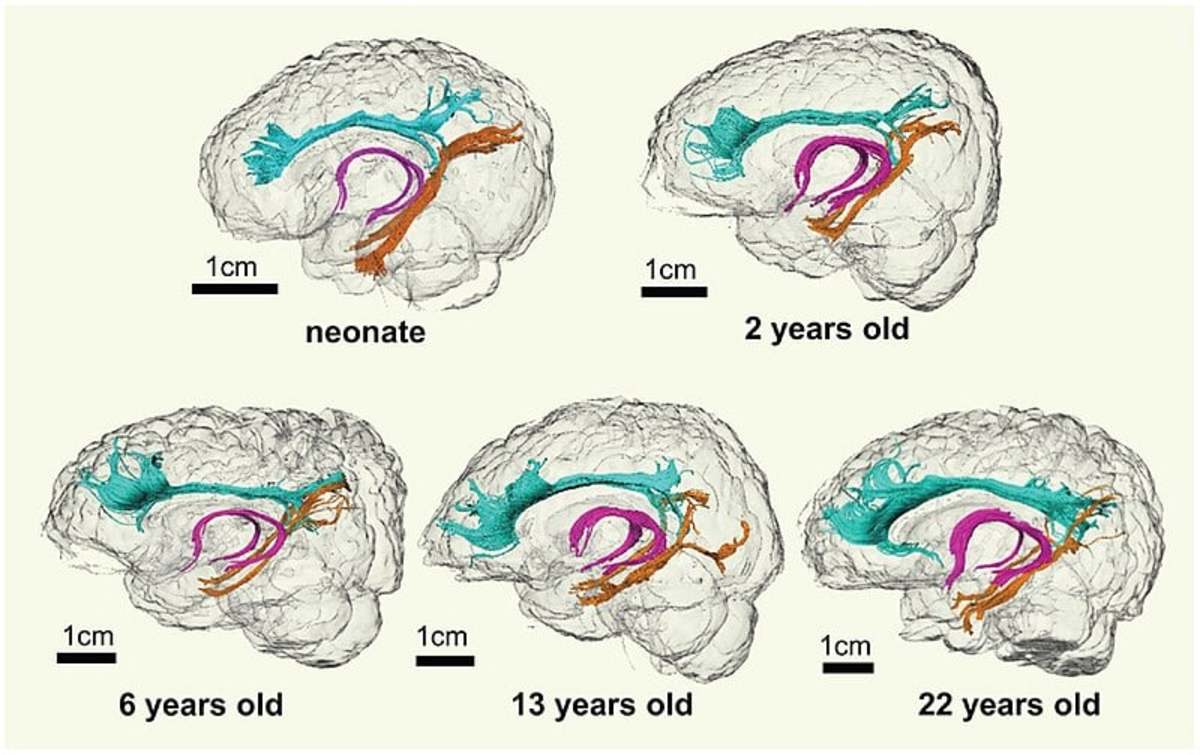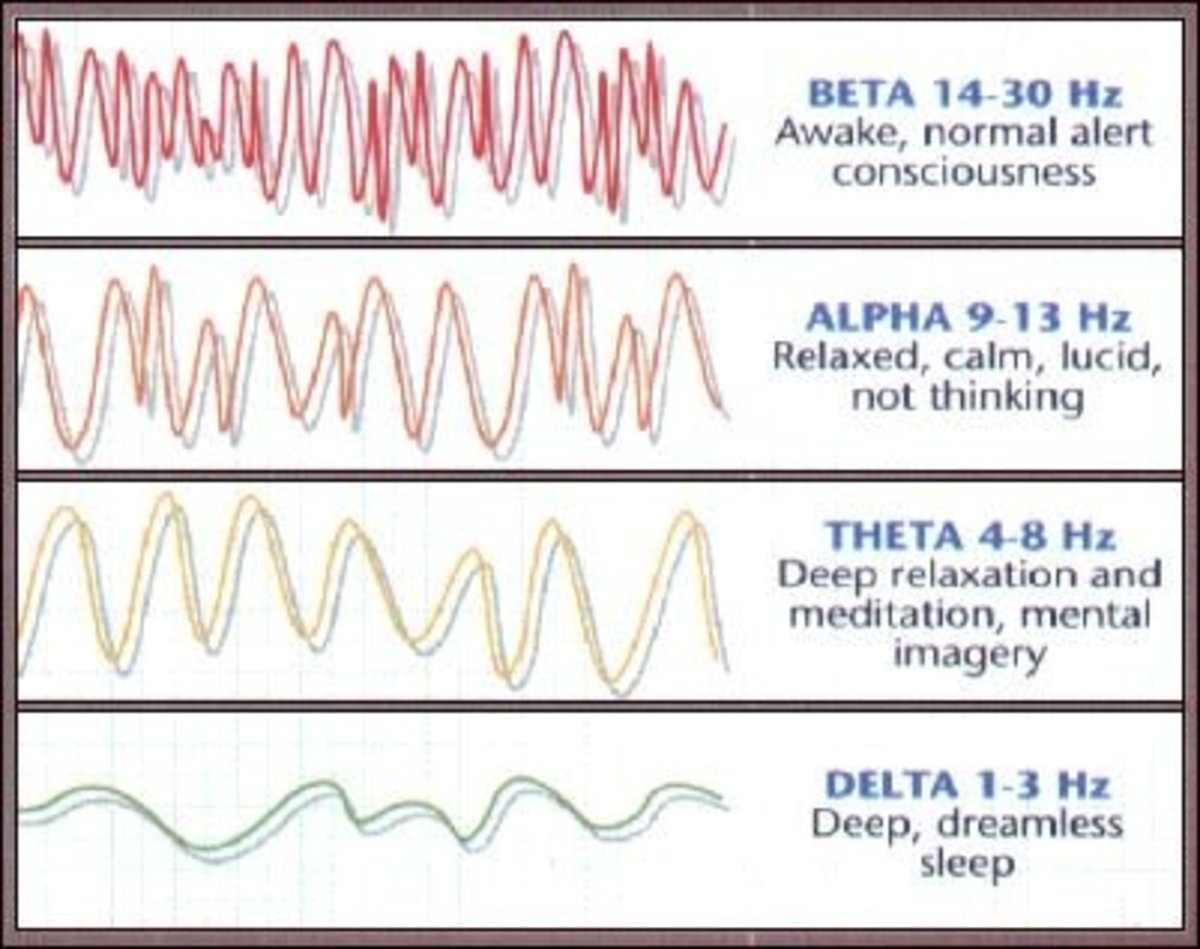Divisions of the Human Brain

The Human Brain and how it Understands
Divisions of the Brain
There are three basic divisions of the brain:the forebrain, the midbrain, and the hindbrain (Breedlove, Watson, & Rosenzweig, 2010; Bigdeli, 2012).The forebrain is the most developed, and includes the thalamus and hypothalamus, which are in the front of the neural tube.These are an integral part of releasing adrenocorticotrophin (ACTH) into the body, which occurs during stressful events (NINDS, 2012).The forebrain also contains the higher level thought processes including memory, thinking, and understanding (Bigdeli, 2011; Mavritsaki, Heinke, Allen, Deco, Avancats, & Humphreys, 2011).The midbrain is at the highest part of the brainstem, helping to control attention, and arousal among other physical functions like visual reflexes, and the hindbrain contains the cerebellum, pons, and medulla, responsible for voluntary movements and learned actions (Breedlove, Watson, & Rosenzweig, 2010).
Each division of the brain is an integral part of how a person may choose to react to situations (NINDS, 2012).Even the functions that are physiological in purpose, like quickening heartbeat, or getting hot, have psychological effects on behavior (Mavritsaki, et al., 2011).A psychologist, by definition, studies behavior, so it is important for them to understand the root causes for many behaviors involving stress, memory, learning, and reactions to external stimulus.This nature requires understanding of the physiological functions of the human brain.
Considered for Personal Research
This author’s interest in how different people learn and how they are inspired or motivated to learn would lead me to study functions and impulses in the forebrain and primarily the split into hemispheres, and their functions, as they are involved in higher thinking and processing; to try to better understand why individuals are interested in different things, their motivations to do these things, and why some individuals do not seem to be able to correlate their behaviors with repercussions.The processing of information in the left and right hemispheres of the cerebrum is done differently although the two sides work together (NINDS, 2012).A person who is incapable of processing words from thoughts may be experiencing disconnect between the abstract hemisphere—the right one, and their speech processes of the left hemisphere (NINDS, 2012).
The emotions and learning. Within the forebrain is the thalamus, which is responsible for emotional responses to input.Memories are also a function of the thalamus.I would like to understand more about why there is not more similarity between the different individuals within their thalamus—why some can casually learn a topic and take a test with no problems, but another person may feel undue and extreme stress once being asked to perform or recall information they believed they were confident in knowing.
In addition, knowing why some choose to understand mathematics, while others possess a musical genius, is necessary to understand.Educators and academic-minded individuals would be served well to understand what motivates a student to learn and what things they can do to improve the perception, cognition, memory, and learning of their students.Research psychologists who attempt to work with school-aged children, early developmental groups, or adult learners should be concentrating on those groups who are best served.Knowing which parts of the brain are involved in the function of learning and how the electrical impulses are firing during learning and understanding will guide all academics toward appropriate goals.
Technological advancements. Having technology on the side of psychology in today’s advanced world gives a psychologist the power and ability to delve deeper into the way that people think, recall, and learn.Since the frontal lobes are the most advanced, and produce the most thought processes and activity, that is the part of the brain that is extremely interesting to me.Studying how the brain reacts to educational stimulation is a good way to begin knowing the best ways to teach specific age and intellectual groups.
With the continued evolution of human beings from the primal instincts of other species of animals on the planet, it is also important for psychologists to want to learn what changed, how it changed, and what differences there are between a human being and, say, a dog or even a monkey.There are some similar primal behaviors between humans and dogs, such as loyalty and obedience to instructions, or to monkeys like the ability to use tools and think things through, be monogamous, and mourn for babies who have died.
Cognition and Learning
Levine and Craik (2012) discuss the frontal lobes of the brain and their higher functioning.They discuss how this region of the brain is utilized by people when they are learning about anything.Knowing that this part of the brain is the learning center is interesting, but also being able to use technology, like imaging machines, to see what happens when a person is actively learning is an interesting concept.
Tests and measurements can provide a psychologist with new information on how a person perceives the world around them, or their cognitive abilities to understand.Tests like the Error Awareness Test (EAT) are used to help determine if a person can respond appropriately to both determine a color /word stream as well as appropriately acknowledge when they had made a mistake during the test (Levine & Craik, 2012).Although tests like the EAT are still being evaluated for their accuracy and validity in the psychological world, it is interesting to know that individuals are being tested at such a basic level to not only use their learning to determine the streams of information but also whether they are aware when they make a mistake during the test (Levine, & Craik, 2012).This author believes that acknowledging or admitting when one is incorrect is a part of learning as much as knowing the answer to a question.
In addition to testing done on a conscious level, there are other methods of seeing what the frontal lobes of the brain are doing when a person is learning something, or thinking about something.Electroencephalographs (EEG) and event-related potential (ERP) are utilized together to record the brain in action as it is processing language (Bressler, & Ding, 2012).In order to know more about how a person thinks and perceives things, language must be understood.By using EEG machines in conjunction with ERP, the psychologist can see what the person is thinking through electrical impulses sent back to readings from the EEG (Bressler, & Ding, 2012).With ERP being included, the EEG data is more complete, as the ERP provides a signature from the temporal lobe showing very low, macroscopic, electrical activity that relates to cognition as well as other functions (Bressler, & Ding, 2006).This additional layer of information can show what electrical impulses are stimulated during memory, learning, and understanding.
The human computer. As a human being’s brain can work as well as a computer it is good for researchers in the realm of psychology to understand why a human’s brain works the way it does (Mavritsaki, et al., 2011).Electrical communications between neurons differ depending on whether a person is listening to baroque music or determining complex mathematical computations (Mavritsaki, et al., 2011).If the key can be found to unlock the different methods by which individuals learn, why some require silence while others can do their best work with heavy metal blasting in their ears then researchers can work with educators to better teach all students and not just those who are the most motivated.Learn about motivation for those who do not seem motivated and the key will be found to inspire everyone to do their best to learn that which means the most to them.This is why this author has chosen to consider the human brain’s capacity for cognition; how it works in the ways that it does, and why it does not work the same way for everyone.
Conclusion
When this author considers how much there is to yet be unlocked in the human brain, it is a wonder that we are able to know as much as we do thus far.From the modest beginnings of understanding learning and cognition to technological advances of the 21st century, it is clear that psychological research is heading in the right direction at a rapid pace.Of course, however, there is still a great deal yet to learn which has not been discovered by research.Some questions have not yet been asked, or technology has not yet grown enough for the answers to be provided.This author is looking forward to a future where we can understand more than that a person has cognition, but what are the physiological behaviors of cognition.
References
Breedlove, S. M., Watson, N. V., & Rosenzweig, M. R. (2010).Biological psychology (6th ed.).Sunderland, MA:Sinauer Associates, Inc.
Bressler, S. L. and Ding, M. 2006. Event-Related Potentials. Wiley Encyclopedia of Biomedical Engineering, doi:10.1002/9780471740360.ebs0455
Bigdeli, S. (2011).New educational research era:Educational neuroscience technology.World Education Center 4(1), 14 - 25.Retrieved from http://www.world-education-center.org/index.php/ijlt/article/viewFile/527/pdf_92
Levine, B., & Craik, F. I. M. (Eds.).(2012).Mind and the frontal lobes: Cognition, behavior, and brain imaging. New York, NY:Oxford University Press, Inc.
NINDS (2012).Brain basics:Know your brain.National Institutes of Health.Retrieved from http://www.ninds.nih.gov/disorders/brain_basics/know_your_brain.htm#geo








